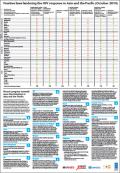Stigma Index Resources
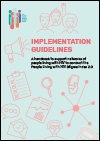
Resource | Guidelines,
The PLHIV Stigma Index Implementation Guidelines: A handbook to support networks of people living with HIV to conduct the PLHIV Stigma Index 2.0. The Implementation Guidelines provide step-by-step guidance on all phases of implementation and link to many helpful templates and tools that can be used throughout the process.
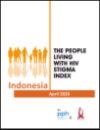
Resource | Publications,
This report presents the results of the PLHIV Stigma Index Indonesia - a community survey to document experiences of SAD among PLHIV in 11 selected districts. Spiritia Foundation commissioned the implementation of the survey to the AIDS Research Center of Atma Jaya Catholic University Jakarta in close collaboration with the community-based implementing unit organizations (IUs) in each district.
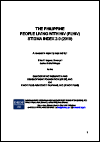
Resource | Publications,
The study utilized the People Living with HIV Stigma Index, a tool created by the Global Network of People Living with HIV (GNP+), International Community of Women Living with HIV (ICW), International Planned Parenthood Federation (IPFF) and Joint United Nations Programme on HIV (UNAIDs), which aims to comprehensively assess and compare the experiences of PLHIVs from across all nations affected by the spread of the disease. The topics covered by this measuring tool include: experience of stigma and discrimination from other people; access to work, health and educational services, internal stigma; knowledge on rights, laws and policies pertaining to HIV; effecting change, testing and diagnosis, disclosure and confidentiality, access to treatment and having children (Quinto et al. 2010).
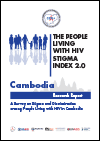
Resource | Publications,
Cambodia was one of the fastest growing HIV epidemics in Asia in the mid-1990s; however, the country has been successful in reducing its HIV prevalence and incidence over the last decade. Despite this success, Cambodia still needs additional efforts to address disparities at the subnational level, special needs among key populations, and general stigma and attitudes associated with HIV/AIDS. HIV-related discrimination is not only a human rights violation, but it also has an impact on people’s ability to access HIV testing, care, and treatment. The United Nations’ 2016 High-Level Meeting on Ending AIDS included “elimination of HIV-related discrimination” as one of three critical targets to achieve by 2020, along with reducing the number of new HIV infections and people dying from AIDS-related causes to under half a million.
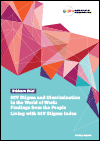
Resource | Publications,
Although access to effective HIV antiretroviral treatments has improved significantly – enabling people living with HIV to live long and productive lives including working and contributing to society in many different ways – people living with HIV continue to face discrimination in relation to work in terms of finding employment, keeping jobs and furthering career progression.










